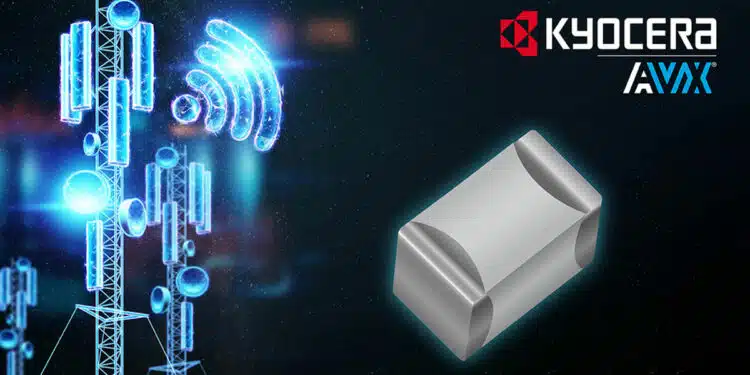Designed to satisfy communications market demand for smaller RF capacitors capable of repeatable RF performance, the new KGU Series C0G (NP0) RF MLCCs pack features including ultra-low ESR, high power, high Q, high SRF, and tight tolerances into miniature EIA chip sizes ranging from 01005 to 0805.
KYOCERA AVX, a leading global manufacturer of advanced electronic components engineered to accelerate technological innovation and build a better future, released the new ultra-low-ESR KGU Series C0G (NP0) RF multilayer ceramic chip capacitors (MLCCs).
Inspired by growing communications market demand for smaller RF capacitors that deliver repeatable RF performance, the new KGU Series RF MLCCs pack multiple performance advantages optimized for communications applications into four miniature EIA chip sizes ranging from 01005 to 0805.
The series features Class I C0G (NP0) ceramic dielectric materials, which are one of the most stable capacitor dielectrics available — exhibiting a temperature coefficient of capacitance (TCC) of 0±30ppm/°C and essentially zero voltage coefficient, and base metal electrodes made of copper plated with a tin/nickel alloy, which deliver high capacitance-voltage (CV) capabilities in small case sizes. It also exhibits ultra-low equivalent series resistance (ESR), high power, high Q, high self-resonant frequencies (SRF), and tight tolerances — all of which are beneficial for countless communications applications.
KGU Series RF MLCCs are currently available in four miniature EIA chip sizes (01005, 0402, 0603, and 0805) and rated for 16–250V, 0.1–100pF, tolerances as low as ±0.05pF, and operating temperatures extending from -40°C to +125°C. Ideal applications for the series include filter networks, matching networks, high-Q frequency sources, and tuning, coupling, bypass, and DC blocking circuits in cellular base stations, 802.11 Wi-Fi networks, subscriber-based wireless devices, and broadband wireless, satellite communications, and public safety radio systems.
Additional features of the new KGU Series RF MLCCs include RoHS compliance, resistance to thermal shock, long lifetime performance, a lack of both aging and piezoelectric effects, and tape and reel packaging for automated assembly.
“Our new KGU Series C0G (NP0) RF MLCCs provide customers in the communications market with a collection of performance characteristics optimized to satisfy their application demands, including ultra-low ESR, high repeatability, high power, high Q, high SRF, tight tolerances, and miniature EIA chip sizes,” said Mohammed Abu-Naim, RF Product Manager, KYOCERA AVX.
Source: KYOCERA AVX





























